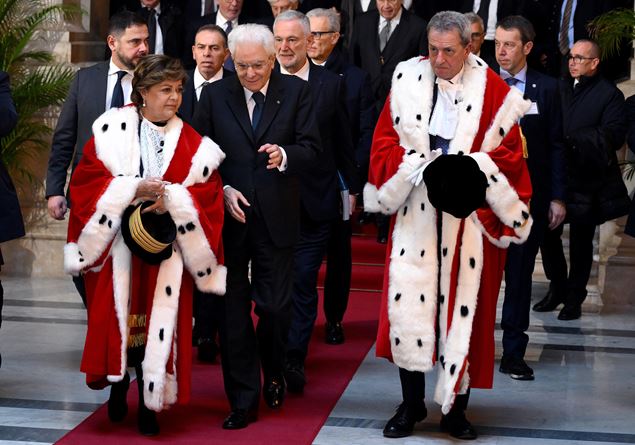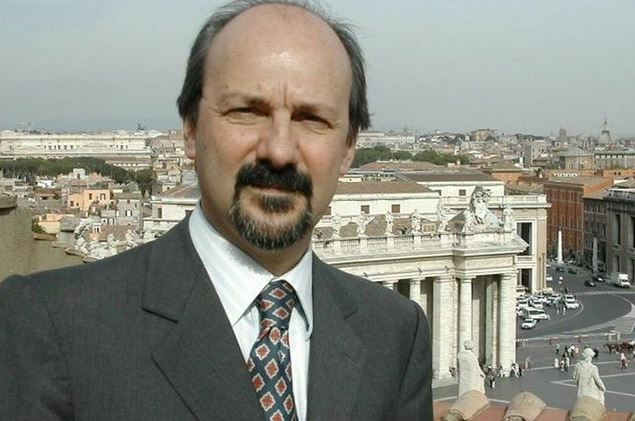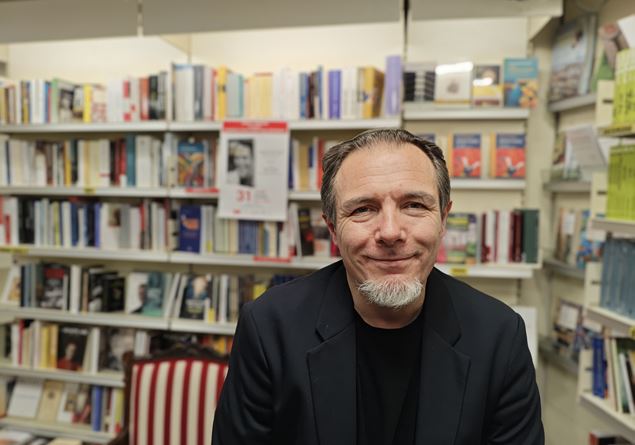«The data return an image of the judiciary other than that object of usual representation and placed on the basis of reformed projects. A judiciary that, conscious of his responsibilities, tries to fulfill his duties in the best way with a spirit of collaboration, ideal tension, professional commitment, sense of limit and measure, attentive listening to the reasons for others in the belief that a constructive comparison constitutes a precious stimulus to improve ». Margherita Cassano, the first president of Cassation opens the judicial year, in the presence of the Head of State Sergio Mattarella, with a relationship that, numbers in hand, recalls how the objectives of the PNRR have been centered with respect to the disposal of the retrato, who arrived, for 99 percent appeal shorts. And that draws a picture of justice for which the need for further reform is not repented. For its part, the Minister of Justice Carlo Nordio focused his report almost exclusively on the defense of the reform of justice with the separation of the career of the judges, underlining that “the reform presents itself, as regards the independence and autonomy of the judiciary , with a Cartesian clarity of rocky solidity. Every speculative fantasy on future variations is an arbitrary divinatory interpretation ». Furthermore, he reiterated that “the legislator will proceed without hesitation, in the confident but unconditional acquiescence to the popular referendum that will seal this complex process”.
The magistrate, on the other hand, has emphasized, on the one hand on a “legislative hypertrophy that implements the requests of an increasingly dilated social body, unable to independently be rules of civil coexistence based on the sharing of constitutional values and constant search for An external intervention that risks, however, to eliminate the role of active and solidarity citizenship outlined by art. 2 of the fundamental paper “, on the other on” instances of protection to which the legislator did not want to or be able to respond “and who” find the judge as the first interlocutor “. Just think of the problems of the end of life and euthanasia, the biological will, therapeutic treatment for terminal or unconscious patients, cites as an example. “In the presence of such a complex trend line,” explains Cassano, “exists the danger that the expansion of the category of fundamental rights, without the prior formal mediation of the legislator, improperly attributes to the judiciary of the synthesis, balance, harmonization”. But while there are large spaces in which the legislation is lacking, with the frequent consequent accusation to the judicial power of having “expanded a lot in the last fifty years”, to put it in the words of Fabio Pinelli, vice president of the CSM, in other sectors ” The multiple special regulations, in some cases not coordinated with each other and placed in measures containing provisions on the most disparate issues, are sometimes the result of emergency decrease intended to reflect on the quality of the regulatory data with consequent expansion of the judge’s interpretative activity “. In the magistrate, the critical issues, from that of a penitentiary system where suicides increase, to safety at work with “the unacceptable number of accidents with a mortal outcome that continue to occur with dramatic periodicity”. On this point, denounces, “economic logic of exasperated flexibility leave the profile of the” quality “of the jobs, disregard the” harmony between the specific characteristics of the worker and the required requirements to carry out a specific activity “, generate precarious employment, do not guarantee The necessary protection, they favor irregular work, create the conditions of tragic epilogues for the life of the worker ». Without considering that when the work is irregular, “taxes and social security contributions” are eluded “we escape” compliance with social rights (minimum wage, legislation to protect work, holidays) “, are avoided” the costs related to protection of health and safety “and” the so -called social dumping is determined, because it creates forms of improper competition for the activities carried out in compliance with the rules, reaching them to put them out of the market. The “irregular” work is one of the main causes of injuries or deaths at work.
He speaks of feminicides “in the year 2024, out of a total of 314 volunteer murders (down 8% compared to 340 of the previous year and 328 of 2022), those accrued in the family or emotional field amount to 151 and 96 cases have a woman as the victim ». Data that continue to be alarming “as an expression of a persistent, narrow conception of the woman as the object of possession and domination by the man”. And again he warns against an unscrupulous use of social networks in the youngest range of the population who favors “the production and spread of sexually explicit images of minors (so -called sexting) with consequent multiplier effect, the cause of behavior harmful to their dignity or persecutory actions who can push the victim to the fulfillment of self -harm gestures ». But also be careful to when, they are putting photos and videos on the net. It is “the new practice of the so-called Sharenging consisting of the online diffusion, by unsuspecting parents, of images of the minor children subject to manipulation, improper use and sharing on the net by subjects operating in the world of pedo-pornography, with consequent , objective exposure to danger of the psycho -physical integrity of the minor himself “. On these fronts there is “urgent adoption of wide -ranging initiatives to promote informed, mature and aware use of the new forms of communication”.
Finally, on the clash between powers, concluding his relationship, Cassano cited the work “The invisible cities”, by Italo Calvino. When “the Emperor of the Tartars Kublai Kan asks for Marco Polo what are the stones that support the arch of the bridge”, recalls the magistrate, “Marco Polo replies that it is not supported by certain stones, but from the entire line of the arch that they form. My hope for the new judicial year is that we can all recover the awareness of being parts of the only arc on which the bridge of the rule of law rests “.










